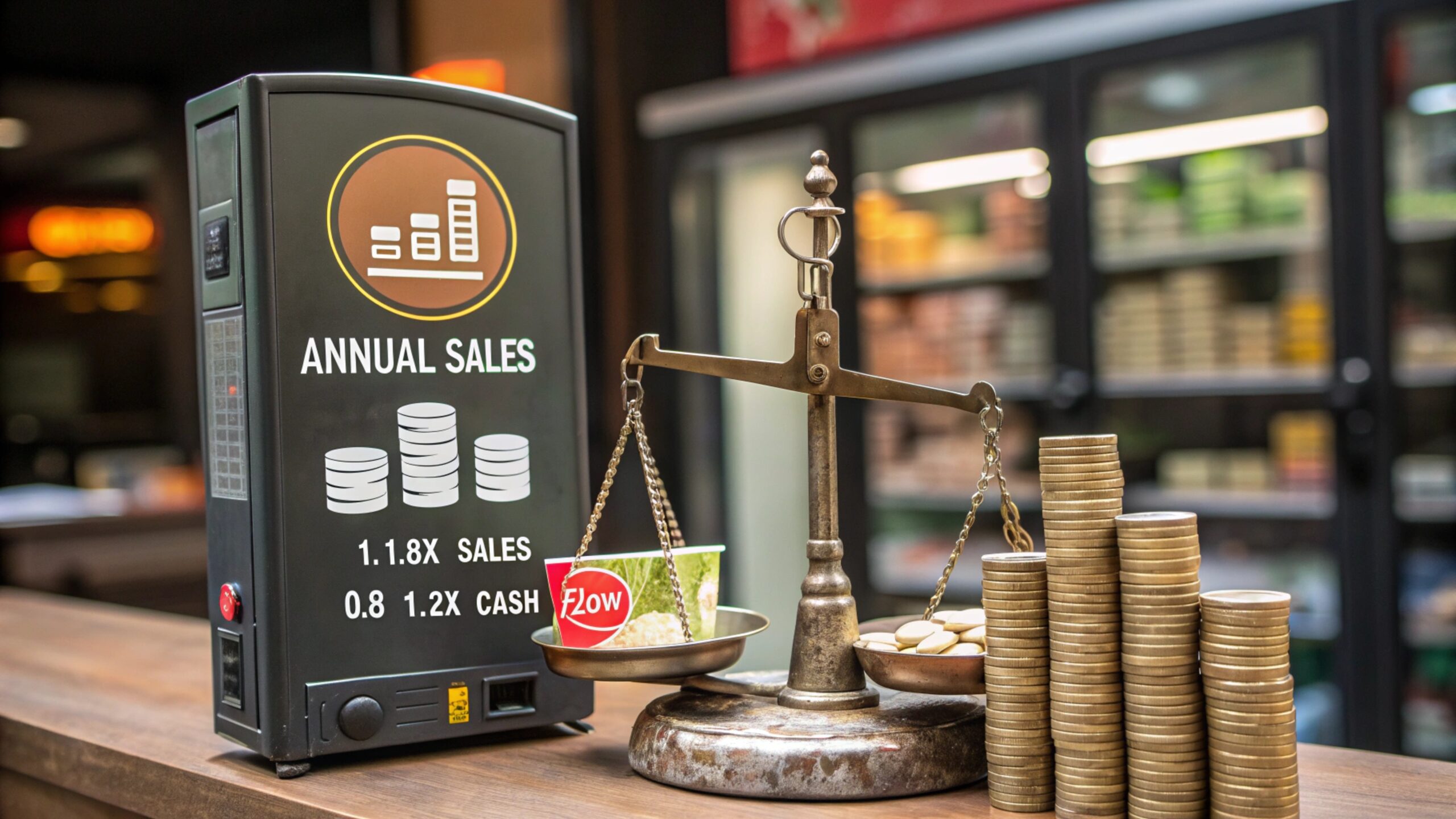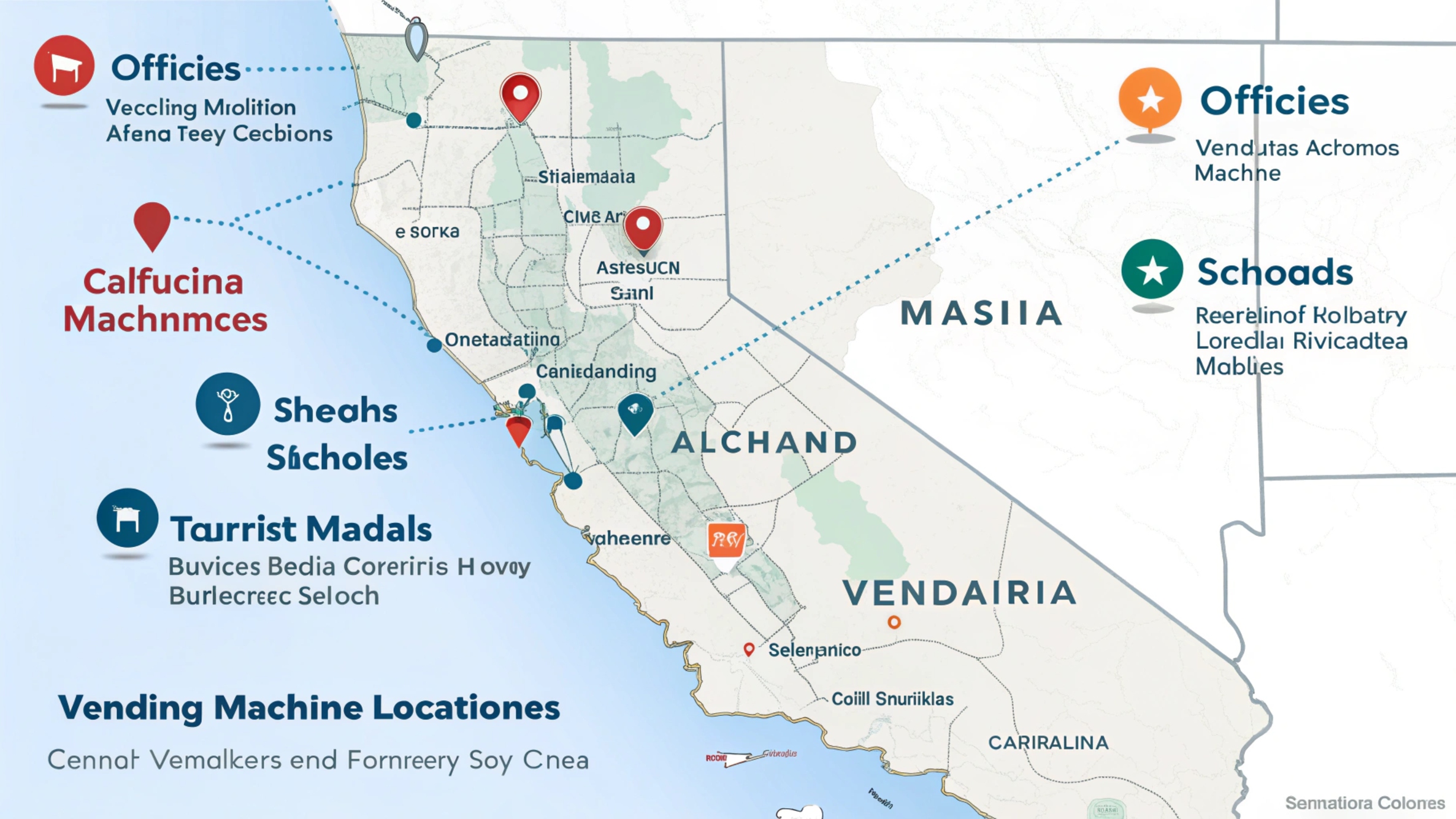
What are the vending machine routes for sale?
The vending business sounds simple, but finding profitable routes is harder than people think. Many buyers make mistakes by not checking location value, machine type, or what actually comes with the route.
Vending machine routes for sale include set clusters of machines located in busy office buildings, schools, malls, or tourist spots. The route package usually covers the machines, location contracts, and sometimes stock and vehicle options.

When I looked at my own route options, I quickly saw that not all routes are equal. Some sellers bundle high-traffic sites with newer equipment, while others offer tired machines in leftover corners of strip malls. If you want to understand the real value, you need to dig into route maps, sales records, and what each contract actually guarantees. Let’s break down what really matters when sizing up vending machine routes for sale.
What are the specific locations included in the vending routes for sale?
Lots of new buyers want to know where the machines are. This makes sense because location is everything in vending, but listings often just say "high foot traffic" or "great exposure" without detail.
For most vending routes, locations include office complexes, schools, retail shops, gyms, hospitals, hotels, and sometimes industrial sites. Better listings identify site names and address types, plus vendor exclusivity or competing machines nearby.

If I think back to routes I audited in southern California, the “best” routes had machines in tech company buildings in Cupertino or inside big tourist hotels in San Diego. These always produced the most sales. Here’s a simple table outlining typical vending route locations and key considerations:
| Location Type | Traffic Pattern | Access Hours | Risks |
|---|---|---|---|
| Office Parks | Weekday, 9-5 | Limited | Seasonal slowdowns |
| Schools & Colleges | Academic calendar | Daytime | Contract expiration |
| Hotels & Motels | 24/7 | Full access | Guest turnover |
| Retail & Malls | High, weekends | Extended | Lease change |
| Factories/Warehouses | Shift-based | Shift hours | Messy environments |
| Hospitals | Around the clock | Full access | Strict contracts |
The more diverse and secure the mix of locations, the better the route. You can’t just believe a generic sales pitch.
How do the sales and profitability vary across different vending routes in California?
Buyers worry about profit. After all, that’s why you’re buying a route—to get steady income without working every waking hour. But profits vary a lot, depending on the local market, the location type, and the machines themselves.
Profits on California vending routes swing by location, machine age, and goods sold. Routes in tech-driven cities with cashless machines make more per stop, while older units in discount stores bring in less. Expect net margins from 25–45%, based on rent and service costs.

There’s a major gap between advertised and real profitability. In San Jose, a tech campus route might earn $3,500 a year per machine, while a low-traffic laundromat in Fresno barely breaks $500. Newer machines that take credit cards bring in more sales than purely coin-op models. Also, branded snack routes, like Mission Foods in San Diego, command higher market multiples due to steady contracts and higher sales. A quick list to compare:
| Route Type | Annual Gross Sales/machine | Typical Net Margin | Notes |
|---|---|---|---|
| Silicon Valley Tech Route | $3,000–$4,500 | 40-45% | NFC-enabled, high margin |
| Tourist Site/Hotel | $2,000–$3,000 | 35% | High vendor fees, high sales |
| Mall or Retail | $1,200–$2,500 | 30-38% | Foot traffic varies by day |
| Discount Store | $500–$1,000 | 28-35% | Low rent, low sales volume |
I learned not to trust listings—always demand sales reports and review costs, especially commission fees and stock shrinkage.
Are there any hidden costs or equipment issues to consider before buying a route?
Every route listing says “turnkey” and “ready to go,” but old machines and bad contracts mean hidden headaches. Many buyers miss these expenses.
Key hidden costs in route purchases include repair bills, out-of-date equipment, supply restocking, contract transfer fees, and possible location loss. Machines made before 2020 may lack remote monitoring or cashless payments, raising risk and reducing sales.

In my first big purchase, I did not check the service records—half of my machines broke within months. Later, I learned to ask for proof of maintenance, the model year, and which ones had new readers installed. List of common hidden issues:
Hidden Costs Table
| Issue | Impact | Question to Ask Seller |
|---|---|---|
| Old machines | High repair costs | “How old is every machine?” |
| No cashless payments | Lower sales | “What % of sales are credit/debit/mobile pay?” |
| Poor contracts | Site can cancel | “What is the contract term; any relocations?” |
| High restocking frequency | Labor costs | “How often do you restock and who pays labor?” |
| Service vendor dependence | Expensive calls | “Who owns the service rights for these units?” |
Always budget extra for repairs and clarify everything on paper before you send money.
What is the typical industry multiple used to value vending machine routes?
This is where many buyers get confused. Listings show prices all over the place, from one month’s gross sales to three years’ net profits. So what’s normal?
Vending machine route valuations usually use a multiple of 1–1.8 times annual sales or 0.8–1.2 times net cash flow. Branded food routes and cashless-equipped fleets trend at the higher end due to reliable contracts and better margins.

For example, a six-location San Jose route selling at $32,000 with $22,083 gross sales lands at a 1.45x revenue multiple. Mission Foods and Pepsi distribution routes in California sell at even higher ratios because large brands guard the best locations. Less attractive routes and old snack machines might move for under 1x gross. Always check if the sale includes stock, existing debts, or service contracts because these impact value.
How reliable are seller-provided sales figures and location contracts for route evaluation?
Buyers want to trust the numbers, but inflated sales and vague contracts are the industry’s worst-kept secrets. Protecting yourself comes down to verification.
Seller-provided numbers for vending routes are not always reliable. Smart buyers demand bank statements, machine meter reports, and written location contracts for each site. Verifying sales for at least six months is industry best practice.

I made mistakes early by only looking at “route books”. Now I always ask for actual meter readings and sales receipts by machine for the last 6–12 months, plus a copy of each location contract. I call several site managers to check if the contract is secure and what service was like. If a seller hesitates, move on—it’s not worth the risk.
Conclusion
If you want to buy a vending route, focus on location mix, machine type, and verified sales, not hype. Always check contracts, repairs, and real profit numbers before you buy.







